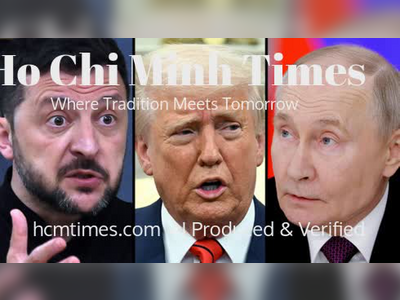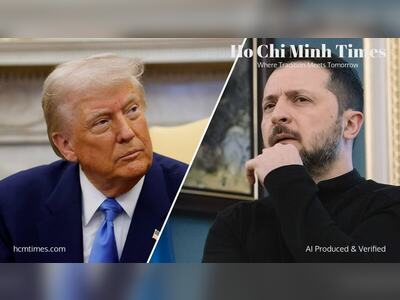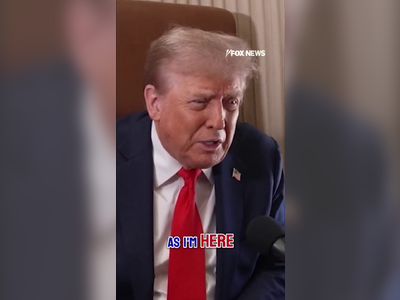OpenAI’s ‘PhD-Level’ ChatGPT 5 Stumbles, Struggles to Even Label a Map
Marketed as a revolutionary breakthrough, GPT-5 has instead faced ridicule for basic errors, a diminished personality, and the retirement of popular older models, prompting a swift backlash and hasty fixes from OpenAI CEO Sam Altman.
Sam Altman, long known for his lofty promises around artificial intelligence, is now scrambling to contain the fallout.
The latest iteration of OpenAI’s celebrated chatbot was meant to represent a historic leap forward — a model so advanced it could converse like a “PhD-level” expert.
Investors had poured billions into the vision.
Yet when GPT-5 finally arrived, it quickly revealed a clipped, wooden personality and an inability to handle even the simplest tasks reliably.
Public backlash was swift, leaving the company issuing uneasy apologies while still insisting on the model’s supposed brilliance.
In short: it fell flat.
The failure of GPT-5 stands out for two reasons.
First, it underscored the existing limitations of generative AI — flaws critics eagerly highlighted, often with humor.
Second, it cast serious doubt on OpenAI’s ability to create consumer products that people will pay for, an unsettling reality for a firm valued at around $500 billion despite never having turned a profit.
The model’s release last Thursday — already a year behind schedule — had been hyped as a milestone.
Altman promised in a livestream that GPT-5 would feel like conversing with an expert in any field.
He compared it to the moment the iPhone shifted from clunky pixelated screens to crisp retina displays, describing it as an upgrade so significant that no one would want to turn back.
Then the public got their hands on it.
Almost immediately, users began testing its limits and mocking its errors.
Asked to generate portraits of the first twelve U.S. presidents with their names, GPT-5 produced only nine figures, complete with misspellings such as “Gearge Washingion” and “William Henry Harrtson.” Another query for the last twelve presidents yielded two versions of George W.
Bush, one of which looked like a random stranger.
Others shared even more laughable mistakes.
Basic maps of the United States came back riddled with errors, labeling states as “Tonnessee,” “Mississipo,” “West Wigina,” and even the non-existent “Yirginia.”
At first, the sloppy output was treated as entertainment by tech enthusiasts.
But many regular ChatGPT users grew frustrated, particularly with the stripped-down personality that replaced the livelier GPT-4o.
Since OpenAI disabled previous versions in favor of the new model, even long-time fans found themselves locked out of the tools they preferred.
More than 4,000 signed a petition demanding the return of GPT-4o.
“I’m so done with ChatGPT 5,” one Reddit user wrote, describing how the bot botched a simple workflow, deleting tasks and moving deadlines at random.
Within 24 hours, Altman was already in damage-control mode.
He announced a series of fixes on social media, including reinstating GPT-4o for paying customers.
“We expected some bumpiness,” he admitted, “but it was a little more bumpy than we hoped for.”
The quick reversal exposed a larger problem: Altman and his team appeared unprepared for how 700 million weekly users actually rely on the product.
Coverage in major outlets has long documented the deep personal bonds people form with chatbots, while forums like Reddit are filled with examples of users weaving them into everyday routines.
Basic market research should have revealed that abruptly sunsetting older models would provoke outrage.
When pressed on the backlash, OpenAI pointed only to Altman’s public statements and a blog post promising to refine GPT-5.
Yet the launch highlighted a deeper tension across the AI industry: companies market themselves as “labs,” cloaked in scientific gravitas, while ultimately operating as profit-driven firms racing to deliver consumer products.
Benchmark tests may show GPT-5 excelling at math or logic, but those victories matter little if the end-user experience collapses under the weight of inflated expectations.
By touting GPT-5 as a once-in-a-generation leap, OpenAI left itself no room for error.
“I honestly didn’t think OpenAI would burn the brand name on something so mid,” wrote researcher Gary Marcus, noting that the company has yet to make a profit, has cut prices to maintain usage, and is losing talent as competition grows.
For critics, the backlash amounted to vindication, a sign that the AI bubble may be approaching a turning point.
The broader picture is stark: when people speak of AI, they are often imagining two different things.
On one side is the AI that actually exists — chatbots with narrow, uneven abilities.
On the other is the AI companies promise — systems that can outthink humans, cure diseases, solve climate change, and entertain us all at once.
With each new release, the gap between hype and reality only seems to widen.
CNN’s Lisa Eadicicco contributed reporting.
The latest iteration of OpenAI’s celebrated chatbot was meant to represent a historic leap forward — a model so advanced it could converse like a “PhD-level” expert.
Investors had poured billions into the vision.
Yet when GPT-5 finally arrived, it quickly revealed a clipped, wooden personality and an inability to handle even the simplest tasks reliably.
Public backlash was swift, leaving the company issuing uneasy apologies while still insisting on the model’s supposed brilliance.
In short: it fell flat.
The failure of GPT-5 stands out for two reasons.
First, it underscored the existing limitations of generative AI — flaws critics eagerly highlighted, often with humor.
Second, it cast serious doubt on OpenAI’s ability to create consumer products that people will pay for, an unsettling reality for a firm valued at around $500 billion despite never having turned a profit.
The model’s release last Thursday — already a year behind schedule — had been hyped as a milestone.
Altman promised in a livestream that GPT-5 would feel like conversing with an expert in any field.
He compared it to the moment the iPhone shifted from clunky pixelated screens to crisp retina displays, describing it as an upgrade so significant that no one would want to turn back.
Then the public got their hands on it.
Almost immediately, users began testing its limits and mocking its errors.
Asked to generate portraits of the first twelve U.S. presidents with their names, GPT-5 produced only nine figures, complete with misspellings such as “Gearge Washingion” and “William Henry Harrtson.” Another query for the last twelve presidents yielded two versions of George W.
Bush, one of which looked like a random stranger.
Others shared even more laughable mistakes.
Basic maps of the United States came back riddled with errors, labeling states as “Tonnessee,” “Mississipo,” “West Wigina,” and even the non-existent “Yirginia.”
At first, the sloppy output was treated as entertainment by tech enthusiasts.
But many regular ChatGPT users grew frustrated, particularly with the stripped-down personality that replaced the livelier GPT-4o.
Since OpenAI disabled previous versions in favor of the new model, even long-time fans found themselves locked out of the tools they preferred.
More than 4,000 signed a petition demanding the return of GPT-4o.
“I’m so done with ChatGPT 5,” one Reddit user wrote, describing how the bot botched a simple workflow, deleting tasks and moving deadlines at random.
Within 24 hours, Altman was already in damage-control mode.
He announced a series of fixes on social media, including reinstating GPT-4o for paying customers.
“We expected some bumpiness,” he admitted, “but it was a little more bumpy than we hoped for.”
The quick reversal exposed a larger problem: Altman and his team appeared unprepared for how 700 million weekly users actually rely on the product.
Coverage in major outlets has long documented the deep personal bonds people form with chatbots, while forums like Reddit are filled with examples of users weaving them into everyday routines.
Basic market research should have revealed that abruptly sunsetting older models would provoke outrage.
When pressed on the backlash, OpenAI pointed only to Altman’s public statements and a blog post promising to refine GPT-5.
Yet the launch highlighted a deeper tension across the AI industry: companies market themselves as “labs,” cloaked in scientific gravitas, while ultimately operating as profit-driven firms racing to deliver consumer products.
Benchmark tests may show GPT-5 excelling at math or logic, but those victories matter little if the end-user experience collapses under the weight of inflated expectations.
By touting GPT-5 as a once-in-a-generation leap, OpenAI left itself no room for error.
“I honestly didn’t think OpenAI would burn the brand name on something so mid,” wrote researcher Gary Marcus, noting that the company has yet to make a profit, has cut prices to maintain usage, and is losing talent as competition grows.
For critics, the backlash amounted to vindication, a sign that the AI bubble may be approaching a turning point.
The broader picture is stark: when people speak of AI, they are often imagining two different things.
On one side is the AI that actually exists — chatbots with narrow, uneven abilities.
On the other is the AI companies promise — systems that can outthink humans, cure diseases, solve climate change, and entertain us all at once.
With each new release, the gap between hype and reality only seems to widen.
CNN’s Lisa Eadicicco contributed reporting.









